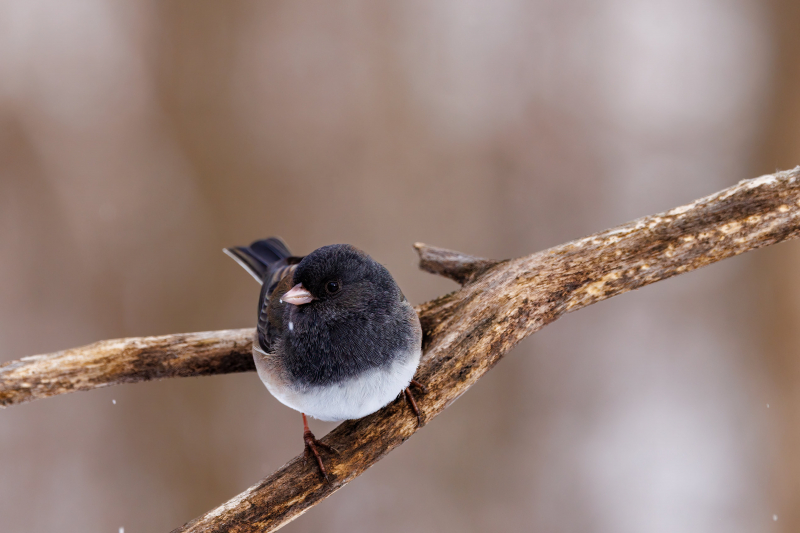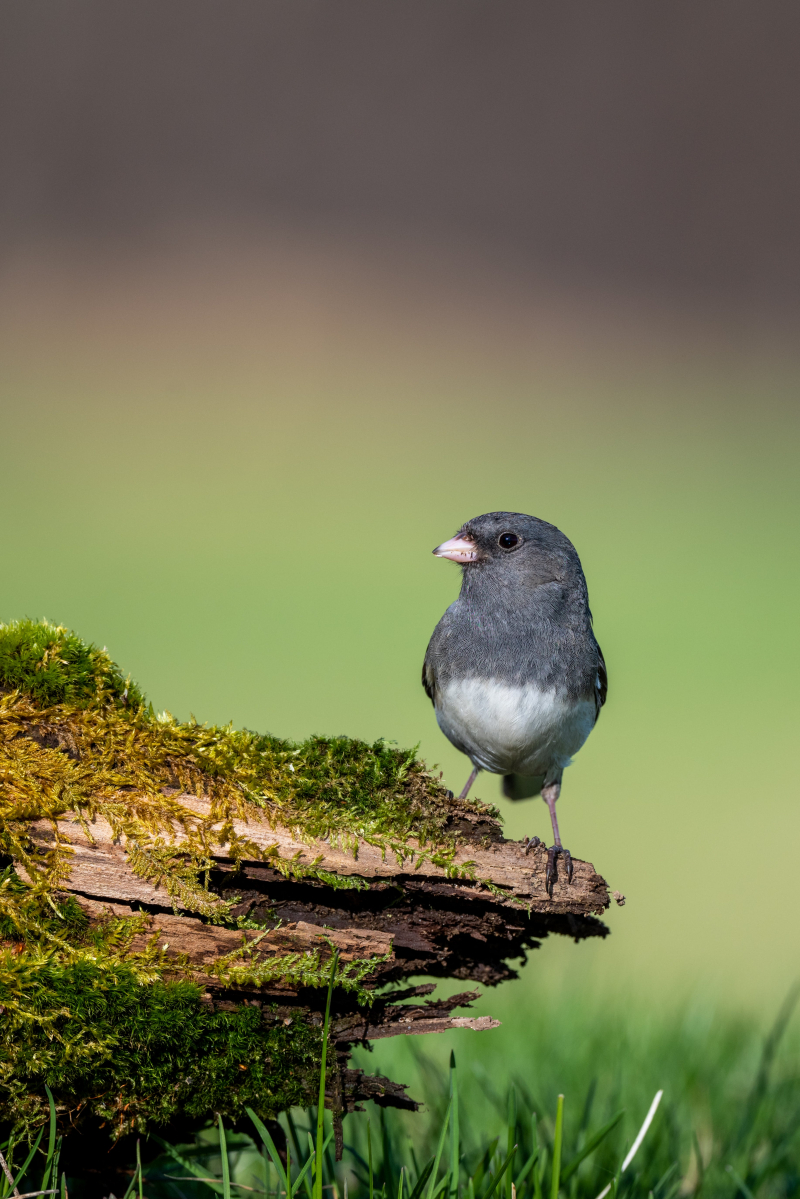Dark-Eyed Junco
The Dark-eyed Junco (Junco hyemalis) is a small and charming bird that belongs to the sparrow family, Emberizidae. Widely distributed across North America, these juncos are known for their distinctive coloration, diverse sub-species, and adaptable nature, making them a familiar and beloved sight for birdwatchers in various regions.
One of the key characteristics of the Dark-eyed Junco is its variable plumage, which varies among different sub-species. The most widespread forms include the "slate-colored" junco with a dark gray hood, back, and wings, and the "Oregon" junco with a darker hood and rich brown back. Other sub-species, such as the "pink-sided" and "gray-headed," exhibit unique combinations of colors, providing bird enthusiasts with a fascinating array of patterns and variations.
The Dark-eyed Junco is a migratory bird, and its range extends from the northern forests and tundra during the breeding season to more southern latitudes in the winter. These migrations result in variations in the appearance of the Dark-eyed Junco populations, creating a dynamic and ever-changing presence in different regions throughout the year.
In terms of habitat, Dark-eyed Juncos are highly adaptable and can be found in a variety of environments, ranging from alpine meadows and coniferous forests to suburban gardens and open fields. They are ground-dwelling birds that forage for seeds, insects, and small invertebrates on the forest floor. Their diet is diverse, with seeds being a staple during the winter months when insects are less abundant.
The Dark-eyed Junco is well-known for its behavior of "double-scratching" the ground to uncover food. This involves hopping forward and backward while simultaneously raking both feet backward, a distinctive foraging behavior that sets them apart. Their social structure is often loose, and they may form flocks during migration or when foraging in open areas.
While the Dark-eyed Junco is not known for elaborate songs, it communicates using a variety of soft, musical trills and calls. These vocalizations are essential for maintaining social bonds, signaling alarm, and establishing territory.
For birdwatchers and researchers alike, the Dark-eyed Junco serves as a fascinating subject due to its adaptability, varied plumage, and behavioral nuances. Conservation efforts for these birds focus on preserving diverse habitats, as changes in climate and land use can impact their breeding and wintering grounds.

















